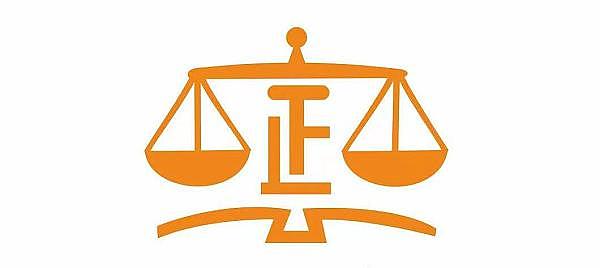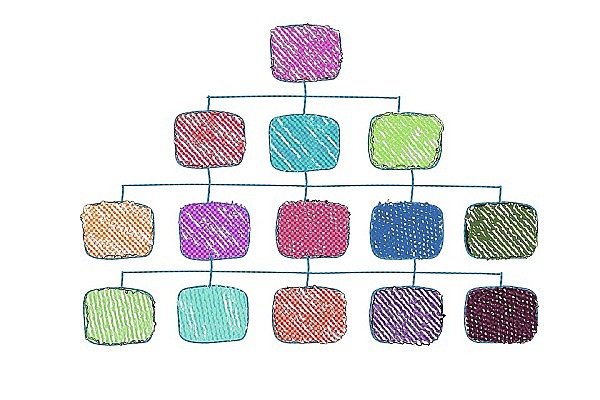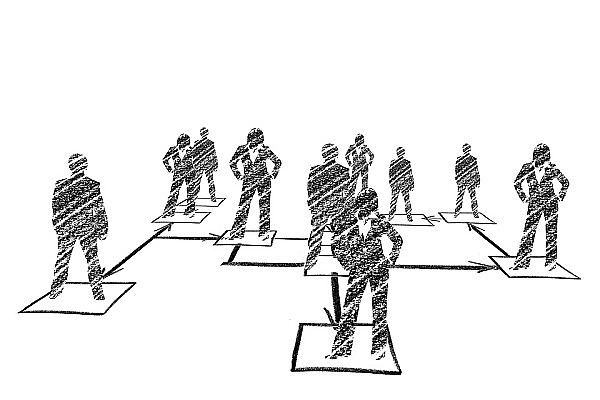Since 2021, entrepreneurs in the cryptocurrency industry have known that issuing virtual currencies can easily trigger legal red lines, such as being suspected of illegal fundraising, organizing and leading pyramid schemes, illegal business operations, etc. Since last year, Lawyer Liu has handled several cases involving suspected organizing and leading pyramid schemes due to issuing virtual currencies. Based on my understanding of such cases, I would like to discuss from both a legal and practical perspective why issuing virtual currencies is easily identified as a pyramid scheme by judicial authorities, and how to defend such cases?

1. Pyramid schemes and pyramid scheme crimes
There are two types of pyramid schemes in the legal sense: pyramid schemes in the sense of administrative law and the crime of organizing and leading pyramid scheme activities in the criminal law (hereinafter referred to as "pyramid scheme crimes"). The definitions and legal responsibilities (penalties) of the two types of pyramid schemes are not exactly the same.
(I) Identification and Punishment of Administrative MLM
MLM in the sense of administrative law is stipulated in the State Council's "Regulations on Prohibition of MLM", which defines MLM as:
"MLM as referred to in these Regulations refers to the behavior of organizers or operators recruiting personnel, calculating and paying remuneration to the recruited personnel based on the number of personnel directly or indirectly recruited by them or their sales performance, or requiring the recruited personnel to pay a certain fee to obtain membership qualifications, etc., to seek illegal profits, disrupt economic order, and affect social stability."
According to the literal interpretation, it seems that the several models listed are in a parallel relationship. For example, directly or indirectly calculating the income based on the number of recruited personnel, calculating the income based on the sales business of the recruited personnel, requiring the recruited personnel to pay an "entry fee" to obtain membership qualifications, etc., as long as any one of them is met, it constitutes an illegal (non-criminal) MLM.
At the same time, according to the provisions of the "Regulations on Prohibition of Pyramid Selling", there are several specific modes of administrative pyramid selling:
"1. The organizer or operator develops personnel and requires the developed personnel to develop other personnel to join, and calculates and pays remuneration to the developed personnel based on the number of personnel directly or indirectly developed by them, and makes illegal profits;
2. The organizer or operator develops personnel and requires the developed personnel to pay fees or pay fees in disguised form by subscribing to goods, etc., to obtain the qualifications to join or develop other personnel to join, and makes illegal profits;
3. The organizer or operator develops personnel and requires the developed personnel to develop other personnel to join, forming a relationship between the upper and lower lines, and calculates and pays the upper line remuneration based on the sales performance of the lower line, and makes illegal profits."

That is to say, pyramid schemes in administrative law are very easy to constitute. As long as there are more than two levels, and the last level is used by the superior to calculate and pay remuneration, pay entry fees, and the sales performance of the last level is used to calculate and pay remuneration, it constitutes illegal pyramid schemes. However, in practice, we have also heard different voices. Some people believe that the determination of MLM in administrative violations is too broad and arbitrary. The reasonable determination method should be the same as the standard in criminal offenses, such as the following three characteristics: "First, through direct or indirect development of downline personnel, and forming a hierarchical structure; second, the developed personnel are required to pay or pay in disguised form an entry fee; third, the number of developed downline personnel or sales performance is used as the basis for remuneration or rebates."
As a criminal defense lawyer who "shouts for life and defends freedom", and as a believer in the theory of free market economy, Lawyer Liu also hopes that the administrative intervention in the market should be as small as possible, and even administrative MLM violations should be strictly determined. However, the actual situation is not something that can be determined by theorists writing a few articles in the office. In practice, the administrative departments (market supervision and management departments) will not strictly enforce the law according to the standard that the above three elements must be met at the same time. One of the realistic considerations in some regions is the fiscal fines and confiscations.
Penalties for pyramid scheme violations: Organizers will have their illegal gains confiscated and be fined between 500,000 and 2 million yuan; those who introduce, deceive, or coerce others to participate in pyramid schemes will have their illegal property and illegal gains confiscated and be fined between 100,000 and 500,000 yuan.
(II) Identification and Punishment of Pyramid Selling Crimes
The identification of pyramid selling crimes needs to refer to Article 224-1 of the Criminal Law of the People's Republic of my country and the provisions of the "Opinions of the Supreme People's Court, the Supreme People's Procuratorate and the Ministry of Public Security on Several Issues Concerning the Application of Law in Handling Criminal Cases of Organizing and Leading Pyramid Selling Activities", which state the constituent elements of pyramid selling crimes as follows:
"A pyramid selling organization that requires participants to pay fees or purchase goods or services in the name of business activities such as selling goods and providing services, and forms levels in a certain order, directly or indirectly uses the number of people developed as the basis for remuneration or rebates, lures or coerces participants to continue to develop others to participate, defrauds property, and disrupts the economic and social order, and whose internal pyramid selling organizations have more than 30 people participating in pyramid selling activities and have more than three levels" constitutes a pyramid selling crime.
The above content can be simply summarized as follows: in addition to the need to simultaneously possess the administrative MLM violations of “recruiting people”, “entry fees”, and “team compensation or rebates”, it is also necessary to ultimately achieve the purpose of “inducing or coercing others to continue to develop downline participation and defrauding property”.
For those who constitute MLM crimes, under normal circumstances, they may be sentenced to fixed-term imprisonment of not more than 5 years and a fine; in serious circumstances, they may be sentenced to fixed-term imprisonment of more than 5 years and a fine. The amount of the fine is at the discretion of the court. The standard for serious circumstances generally includes “the cumulative number of participants reaches 120, or the MLM funds paid reach 2.5 million yuan, or the MLM participants suffer mental disorders, suicide and other serious consequences.”
(III) The difference between MLM violations and MLM crimes
In theoretical research, some scholars call administrative illegal MLM “commercial MLM” and criminal MLM “fraudulent MLM”. The so-called commercial pyramid scheme is aimed at selling goods, while fraudulent pyramid scheme, as the name implies, is aimed at defrauding property.
In practice, judicial organs also use this as the final judgment standard to determine whether a project constitutes a pyramid scheme violation or a pyramid scheme crime. If an act ultimately defrauds others of their property, and its model meets the requirements that participants need to pay an entry fee, form more than three levels (more than 30 participants), and have rebates at each level or team compensation, then it is suspected of a pyramid scheme crime.

2. Which coin issuance behaviors are likely to be suspected of pyramid schemes
Different from traditional pyramid schemes, virtual currency pyramid schemes have the characteristics of both network pyramid schemes and financial pyramid schemes. In the current currency circle, the projects involved are quickly spread through public social networking platforms, private traffic communities, etc., and can attract a large number of investors in a short period of time. According to public information, in 2023 alone, the global investors lost as much as US$6.6 billion due to virtual currency pyramid schemes. Based on the unique model of virtual currency in issuance and promotion, it is easy for our judicial authorities to identify it as a pyramid scheme.
Based on the different ways of playing in the currency circle, the following modes can easily be identified by judicial authorities as suspected of pyramid schemes:
(I) Hype pseudo-contract token products
The threshold for issuing contracts on the current blockchain is almost zero. Some people with bad intentions hype the concept of DeFi (Decentralized Finance), set up pseudo-contract token product investment thresholds with high investment returns as a gimmick, and induce investors to develop downlines. Through the hierarchical relationship built into the smart contract (or actually adopted during offline promotion), hierarchical rebates or team remuneration methods, a pyramid-like Ponzi scheme structure is finally formed.
(II) False pledge mining
Pledge mining that truly uses blockchain technology cannot be said to be absolutely legal in the current judicial practice in mainland China, but at least it cannot be directly said to be suspected of crimes. However, fake pledge mining can easily violate Chinese criminal law, especially when investors obtain computing power by exchanging mainstream coins for platform coins and investing in mining. Through propaganda and induction, investors are advised that the more mainstream coins they invest and the higher the computing power of the offline promotion and development, the higher the future income will be. Then, hard barriers are set for investors to redeem mainstream coins. The project has no real technology and resource investment, and the ultimate goal is to defraud investors of mainstream coins. In this case, this model is also very likely to be identified as a pyramid scheme crime by judicial authorities.
(III) Token exchange model
Some project platforms absorb investors' mainstream coins on the grounds of hosting mainstream virtual currencies, and later defraud investors of mainstream coins by inducing investors to exchange mainstream coins for platform coins. In terms of specific models, there are pyramid schemes such as inducing investors to promote offline member investment. (For details, please refer to "Why Virtual Currency Pyramid Schemes Can't Stop Despite Repeated Prohibitions?" by the author Qixing Hammer)
In addition, there are various currency circle models suspected of pyramid scheme crimes, and Lawyer Liu will not list them one by one. To sum up, the commonality of these models is that they aim to defraud money and property, use short-term wealth and high investment returns as bait, and provide rebates in obvious or hidden ways, inducing investors to pay threshold fees directly or indirectly and promote downlines and develop more people to enter the market, forming a pyramid-like pyramid structure.

3. Defense of pyramid scheme crimes in the currency circle
Not all coin issuance behaviors constitute pyramid schemes, even if in some cases, a structure far exceeding three layers is formed on the surface. As a defense lawyer, in the pyramid scheme cases of the currency circle, especially those involving pyramid schemes caused by the issuance of coins, Lawyer Liu suggested that the defense must focus on the following:
First, whether it is for the purpose of defrauding property from the perspective of the final purpose.Pyramid scheme crimes are economic crimes, and their fundamental purpose is to defraud others of their property. If the ultimate purpose of an act or a business model is not intended or actually to defraud others of their property, it is difficult to say that the act/business model is a pyramid scheme crime. Of course, it is very weak to rely solely on this point to defend. Judicial organs often use objective evidence to infer subjective behavior to determine that the parties are involved in criminal cases. This also requires the defense to not only prove that the parties have no intention or behavior to defraud property, but also pay attention to combining other evidence in the case for effective defense.
Second, from the perspective of organizational structure, whether it meets the requirements of the level and number of pyramid schemes.The cornerstone of pyramid scheme crimes is that under the pyramid scheme model, there must be more than three layers of structure + more than 30 people involved. Virtual currency cases are also cybercrime cases. From the perspective of the accuser, one of the difficulties in proving the case is how to visualize, objectify, and materialize the virtual participants in the network. Because even if there are WeChat chat records, investment records, and downline development records, if they cannot correspond to specific real individuals such as Zhang San, Li Si, etc., then it is difficult to directly use them as evidence for conviction and sentencing.
One feature of pyramid schemes in the currency circle is that the downline promoted is not calculated based on the number of people, but based on the newly registered wallet address. There is a problem here: each newly registered wallet address is not equal to the new downline developed, because theoretically a person can register an unlimited number of wallet addresses, so how to determine that the developed downline (wallet address) corresponds to a real person? The judicial authorities must provide sufficient evidence.
The third is to examine whether the rebate model has a step-by-step rebate or team remuneration. Step-by-step rebates or team compensation are also the basic constituent elements of pyramid scheme crimes, but in reality, many pyramid scheme cases in the cryptocurrency circle do not involve direct step-by-step rebates or team compensation, that is, there is essentially no exploitation of downlines by uplines. In some cryptocurrency pyramid scheme cases, the organizers’ airdrop rewards to the personnel (essentially wallet addresses) who promote and develop downlines (register new wallet addresses to participate in investment) will be considered as “rebates” in the sense of pyramid scheme crimes. If the defense can prove that the airdrop does not come from the investment amount of the developed downline, then it should not be considered as a rebate in the pyramid scheme crime.
Fourth, the defense of electronic evidence and expert opinions. In cryptocurrency criminal cases, in addition to verbal evidence such as confessions of suspects/defendants, witness testimony, and statements of victims, the two essential types of evidence are electronic data and expert opinions. Moreover, the role of these two types of evidence is crucial. However, judging from the many cryptocurrency cases that Lawyer Liu has participated in defending, especially pyramid scheme cases, there are more or less problems with the electronic evidence and appraisal opinions in all cases. Friends who are interested in the defense of electronic evidence can refer to Lawyer Liu’s previous article "xxx"; for appraisal opinions, there are at least two types: judicial accounting appraisal and electronic data appraisal. The points that can be paid attention to in the defense of appraisal opinions are: the qualifications of appraisal institutions and appraisers; the transfer, acquisition, and content of inspection materials (for example, the appraisal opinions made by the appraisal institution based on a large number of confessions of suspects should be recommended by the court not to be accepted); the compliance of the appraisal process (analysis of on-chain data, hierarchical analysis of wallet addresses, the correspondence between wallet addresses and real people, etc.).

Fourth, Conclusion
Although it is said that since the "9.24 Notice" ("Notice on Further Preventing and Dealing with the Risks of Virtual Currency Trading Speculation"), issuing virtual currency in mainland China violates regulatory regulations, it does not mean that issuing currency is necessarily equivalent to breaking the law or even committing a crime. The specific judgment criteria should return to the specific provisions of my country's criminal law and be examined based on the basic principle of legality of crime and punishment, rather than preconceivedly determining that the issuance of virtual currency constitutes a crime as soon as you see it, and then trying to find ways to read the criminal code to convict and sentence with the mentality of "there is always a crime that suits you".
It is the nature of law to stick to the status quo, but it is the mission of technology to break the status quo. Lawyer Liu hopes that the judicial authorities will be moderately tolerant of emerging technologies, rather than suppress them blindly. Recently, when chatting with a friend, I talked about how almost all technological inventions that have promoted human progress in modern times seem to be absent from Chinese people. Perhaps there will be some changes in the web3.0 era. To ensure that these changes can be realized, it not only depends on the efforts of technology entrepreneurs, but also requires a stable and friendly legal environment to provide support.
 JinseFinance
JinseFinance
 JinseFinance
JinseFinance JinseFinance
JinseFinance JinseFinance
JinseFinance JinseFinance
JinseFinance JinseFinance
JinseFinance Miyuki
Miyuki Alex
Alex Brian
Brian JinseFinance
JinseFinance Sanya
Sanya